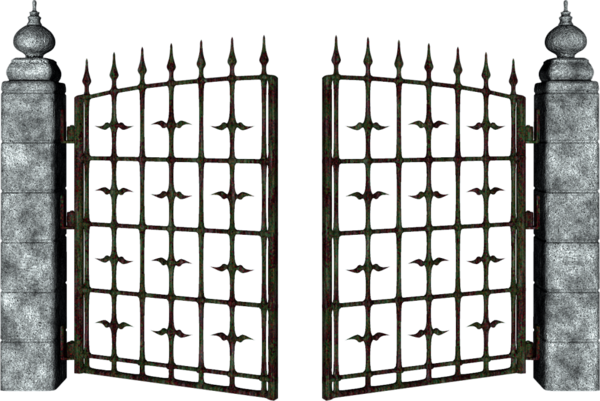GatewayGlobalPublishing.com
"21st Century Media Publishing...A World of Possibilities"
Publishing Strategies
Education - Intelligence - Strategies - Solutions - Resources
Publishing Strategies
Publishing strategies involve a comprehensive plan for getting your work to a target audience, including identifying your audience and the most suitable format (like a book or journal), and choosing the right publisher or platform. Key steps include developing your manuscript, selecting an appropriate and high-impact outlet, optimizing your title and abstract for discoverability, and implementing a robust marketing and distribution plan. Adapting your strategy to the evolving digital landscape, using analytics, and engaging with your readers are also crucial for long-term success.
Core components of a publishing strategy
Research and planning:
Identify your target audience and understand their needs.
Conduct market research to understand your competition and the existing landscape.
Develop a budget that covers both creation and marketing costs.
Content and format:
Determine the best format for your work, such as a traditional book, journal article, or eBook.
For academic work, this includes choosing the right topic and creating a compelling abstract that will get editors' attention.
Ensure your content is unique and extends a considered body of work.
Outlet and distribution:
Select the right publishing outlet by researching journals, publishers, or digital platforms that align with your work and audience.
Look at where your peers publish and where the most cited articles in your field come from.
Plan your distribution strategy, considering how to get your work to readers on various devices and platforms.
Marketing and engagement:
Create an optimized title and abstract to improve search engine discoverability.
Develop a marketing plan that may include social media promotion, email campaigns, and other tactics.
Use analytics to track your results and adapt your strategy as needed.
Engage with your audience to build a community around your work.
Production and editing:
Plan for the editing and production phases, including developmental edits, copyediting, and proofreading.
For digital publications, consider the user experience and ensure compatibility across devices.
Create a compelling cover design and consider the overall art direction.
Tips for academic publishing
Collaborate and network: Talk to colleagues and supervisors about their publishing experiences and recommendations.
Use discovery tools: Use tools like Springer Journal Suggester, Journal Guide, and Open Access Journal Finder to find suitable journals.
Optimize for search: Use keywords and phrases that are commonly used in your field to increase discoverability in databases.
Consider your career goals: Align your publishing strategy with your career and institutional goals.
Tips for book and digital publishing
Build a strong manuscript: Start writing and then invest time in rewriting, developmental editing, and peer review.
Consider a hybrid model: You can use AI tools or ghostwriters to assist in the outlining and writing process.
Partner with experts: Collaborate with digital publishing platforms or freelancers for services like editing, design, and formatting.
Market to your audience: Supplement your author's marketing with your own efforts and look for opportunities to sell your work at a fair price.
Comprehensive Plans for Publishing
Publishing strategies involve a comprehensive plan for getting your work to a target audience, including identifying your audience and the most suitable format (like a book or journal), and choosing the right publisher or platform. Key steps include developing your manuscript, selecting an appropriate and high-impact outlet, optimizing your title and abstract for discoverability, and implementing a robust marketing and distribution plan.
Adapting your strategy to the evolving digital landscape, using analytics, and engaging with your readers are also crucial for long-term success.
Core components of a publishing strategy
Research and planning:
Identify your target audience and understand their needs.
Conduct market research to understand your competition and the existing landscape.
Develop a budget that covers both creation and marketing costs.
Content and format:
Determine the best format for your work, such as a traditional book, journal article, or eBook.
For academic work, this includes choosing the right topic and creating a compelling abstract that will get editors' attention.
Ensure your content is unique and extends a considered body of work.
Outlet and distribution:
Select the right publishing outlet by researching journals, publishers, or digital platforms that align with your work and audience.
Look at where your peers publish and where the most cited articles in your field come from.
Plan your distribution strategy, considering how to get your work to readers on various devices and platforms.
Marketing and engagement:
Create an optimized title and abstract to improve search engine discoverability.
Develop a marketing plan that may include social media promotion, email campaigns, and other tactics.
Use analytics to track your results and adapt your strategy as needed.
Engage with your audience to build a community around your work.
Production and editing:
Plan for the editing and production phases, including developmental edits, copyediting, and proofreading.
For digital publications, consider the user experience and ensure compatibility across devices.
Create a compelling cover design and consider the overall art direction.
Tips for academic publishing
Collaborate and network: Talk to colleagues and supervisors about their publishing experiences and recommendations.
Use discovery tools: Use tools like Springer Journal Suggester, Journal Guide, and Open Access Journal Finder to find suitable journals.
Optimize for search: Use keywords and phrases that are commonly used in your field to increase discoverability in databases.
Consider your career goals: Align your publishing strategy with your career and institutional goals.
Tips for book and digital publishing
Build a strong manuscript: Start writing and then invest time in rewriting, developmental editing, and peer review.
Consider a hybrid model: You can use AI tools or ghostwriters to assist in the outlining and writing process.
Partner with experts: Collaborate with digital publishing platforms or freelancers for services like editing, design, and formatting.
Market to your audience: Supplement your author's marketing with your own efforts, and look for opportunities to sell your work at a fair price.
Open Access (OA) publishing makes scholarly literature and research findings freely available online to anyone, eliminating paywalls and subscription fees for readers. This model contrasts with traditional publishing, where access is restricted to paying subscribers or institutions.
The OA movement is driven by the desire to increase knowledge dissemination, accelerate research, and improve equity of access, especially for researchers and communities in less-funded areas.
Models of Open Access publishing
What it is: The publisher makes all articles in a journal available for free immediately upon publication on the journal's website.
How it's funded: Authors or their affiliated institutions typically pay an Article Processing Charge (APC) to cover publication costs, though many Gold OA journals are free for authors.
Benefits: Articles are immediately accessible to all readers, can be reused more broadly under licenses like Creative Commons, and often see increased visibility and citations.
Examples: The Public Library of Science (PLOS) publishes exclusively open access journals.
What it is: Also known as self-archiving, this model involves an author publishing their work in a traditional journal and then depositing a version of the article in a digital repository.
How it's funded: This model is generally free for the author, though traditional journals may have embargo periods before the article can be made openly accessible.
Key versions:
Preprint: The author's original manuscript before peer review.
Postprint: The final peer-reviewed manuscript before the publisher's copy-editing and formatting.
Examples of repositories: Institutional repositories (archives for a specific university) or subject repositories like arXiv.
Diamond/Platinum Open Access
What it is: A subset of Gold OA where the journal is free for both the author and the reader. This model completely eliminates APCs.
How it's funded: Costs are covered by external sources, such as academic institutions, government grants, library subsidies, or philanthropic donations.
Examples: Many small, scholarly society-published journals operate on this model.
What it is: An author pays an APC to make their article openly accessible in a journal that is otherwise subscription-based. The journal contains a mix of both open and closed-access articles.
Controversy: The practice has been criticized as "double dipping," since the publisher is paid twice—by the author for the APC and by institutions for the subscription.
Challenges in Open Access publishing
Predatory journals: The APC-based model has led to the emergence of exploitative journals that charge fees but offer little to no peer review. Authors must carefully vet a journal's reputation and practices to avoid these.
High APCs: Some Article Processing Charges can be very high, creating a financial barrier for researchers without institutional funding or those from disadvantaged regions.
Financial sustainability: For diamond and other non-APC models, securing sustainable funding can be challenging, often requiring subsidies from institutions or grants.
Quality control concerns: While most reputable OA journals have rigorous peer-review, the perception of lower quality persists among some due to predatory practices. Tools like the Directory of Open Access Journals (DOAJ) help identify legitimate journals.
Best practices for authors
Choose the right model: Evaluate whether Gold, Green, or Diamond OA is the best fit for your work based on journal availability, cost, and funder requirements.
Vet your journal: Use trusted resources like DOAJ and Think. Check. Submit. to evaluate a journal's quality and practices.
Retain your rights: When publishing in a traditional journal, check its Green OA policy on publisher websites like SHERPA/RoMEO to understand your rights to self-archive and any embargo periods.
Ensure discoverability: Register your work with a persistent identifier like an ORCID iD and deposit copies in relevant institutional or subject repositories.
Open Access (OA) Publishing
Researchers can secure funding for Open Access (OA) publishing fees through institutional funds, research grants, transformative agreements, and publisher fee assistance programs. The specific options available vary depending on the researcher's affiliation, discipline, and the journal of choice.
Institutional funds and agreements
Library Open Access (OA) funds: Many universities and research institutions set aside funds to help faculty and students cover Article Processing Charges (APCs). These funds are typically managed by the university library and often operate on a first-come, first-served basis. Eligibility criteria may vary by institution and often include restrictions on which journals are covered.
Departmental budgets: Some academic departments may allocate budgets to support their faculty in covering publication fees. It is worth contacting your department chair or research office to inquire about available support.
Consortial agreements: University libraries often join consortia to negotiate "Read and Publish" or "transformative" agreements with major publishers. These agreements convert subscription spending into open access publishing funds, allowing affiliated authors to publish in certain journals at a discounted rate or for free.
Publisher membership programs: Some publishers offer institutional membership programs that provide authors with discounts or full coverage of APCs when publishing in their journals. Check the author services section of the publisher's website to see if your institution is a member.
Open Access Publishing Fund - Temple University Libraries
Open Access Publishing Fund. The Open Access Publishing Fund supports Temple researchers who would like to publish in an open acce...
Favicon
Temple Libraries
Explore our publication fees and funding for open ... - PLOS
Open access funding support. There is growing momentum to encourage open access publishing through funding initiatives.
Globally
Favicon
PLOS
Research grants and funder mandates
Include fees in grant applications: When applying for a research grant, researchers should explicitly budget for OA publication fees as a direct cost in their proposal. Most federal and private funding agencies allow this and have specific policies regarding the use of grant money for this purpose.
Funder OA mandates: Many research funders, such as the National Science Foundation (NSF) and the National Institutes of Health (NIH), have OA mandates. For example, under Plan S, many research funders require funded research to be published immediately OA. In these cases, the funder provides money or a mechanism to cover the costs.
Dedicated funder grants: Certain funding agencies may offer specific grants to cover APCs, even if the research was not directly funded by them. Organizations like the Wellcome Trust also accept grant proposals that cover OA costs.
Fee waivers and assistance programs
Publisher waiver programs: Many publishers offer fee waivers or discounts to authors from low- and middle-income countries or those who demonstrate financial need. For example, PLOS has a Publication Fee Assistance program for qualifying authors.
Discipline-specific support: Some disciplines have specific funding programs or consortiums dedicated to OA publishing. For instance, the Sponsoring Consortium for Open Access Publishing in Particle Physics (SCOAP³) supports OA in that field.
Before you apply
Check eligibility: Carefully review the criteria for any OA funding source to ensure you qualify based on your institution, publication, and funding history.
Confirm journal compliance: If you are seeking funds from a specific grant or institution, verify that your target journal is on the approved list. Some funds only cover fully OA journals listed in the Directory of Open Access Journals (DOAJ), excluding hybrid journals.
Plan ahead: Secure funding approval before a manuscript is accepted, if possible. Most programs will not consider requests for reimbursement after publication.
Join Our Mailing List
Sign up to learn more about writing and publishing your
own book, eBook, publications or Special Reports.
Learn about authors and writers who publish using sustainable strategies and solutions to improve their profitability, stewardship and quality of life improvement in their writing ventures.
We send Notifications of Free Resources, News and other exclusive Special Reports as well as other News, Strategies and Solutions that come to you approximately once a month, and you can unsubscribe at any time.
This is your chance to get serious and move on up in the writing and publications of your written words!
OUR










